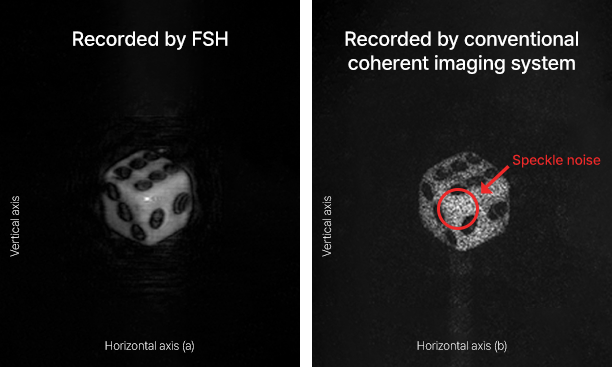FSH
FSH 3D Technology
* FSH : Flying-over scanning Holography
- Architecture of FSH
- FSH technologies separate lights having different paths and then use a modulator for the light of one path to modulate it into light with a specific frequency. The two lights modulated into different frequencies pass the beam enlarger to expand and then take on the form of a plane wave and a spherical wave. The plane wave and spherical wave modulated into different frequencies are combined to create light in the form of a zone plate, scanning the object using the scanning mirror unit. The light reflected from the object is collected using a lens, with a single pixel detector used to convert it into the form of an electric signal.
- Advantages of FSH
-
- It is an incoherent hologram optical system that can acquire hologram information of the target without speckle noise.
- Using laser lighting with directivity enables filming holes and gaps located under the target.
- Using laser lighting with directivity without speckle noise enables filming holes and gaps located under the target.
- It is possible to acquire high-contrast ratio images with mirror reflection features and use the single pixel detection and heterodyne detection method, using scanning that applies lights with specific patterns; thus enabling acquiring information on polished surfaces like glass and metal.
- Fast 3D inspection is possible as 2D image and 3D information can be acquired by filming only once.
Speckle Free FSH
Speckle noise problem of
coherent optical system
Coherent imaging system that includes digital holography
and interferometry suffers from inherent coherent noise, known as Speckle
FSH as a Speckle Free Holography
FSH overcomes the inherent drawbacks
of conventional coherent imaging system

Speckle noise of a coherent imaging system

